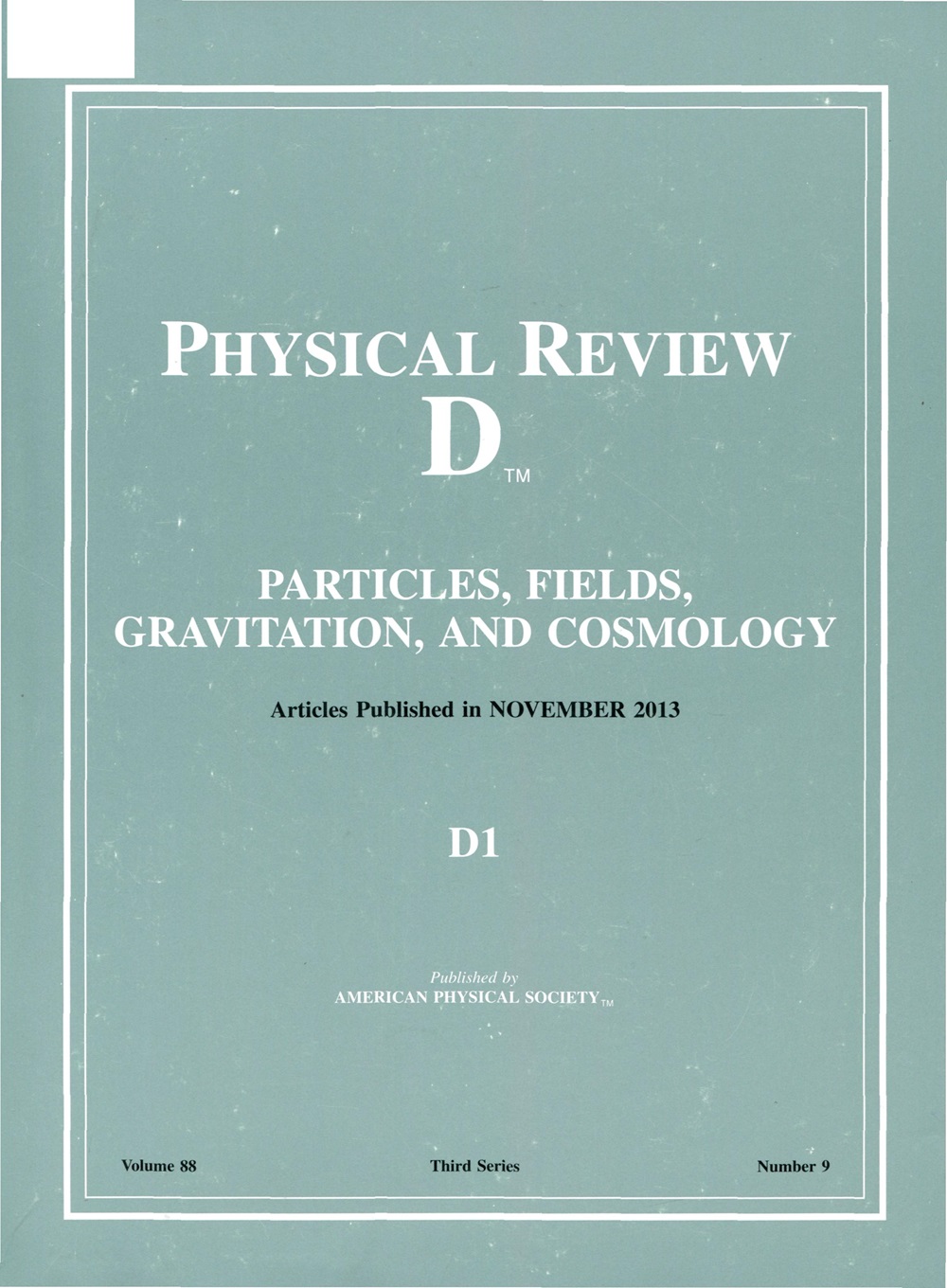Cornering relative symmetry theories
IF 5
2区 物理与天体物理
Q1 Physics and Astronomy
引用次数: 0
Abstract
The symmetry data of a d-dimensional quantum field theory (QFT) can often be captured in terms of a higher-dimensional symmetry topological field theory. In top-down (i.e., stringy) realizations of this structure, the QFT in question is localized in a higher-dimensional bulk. In many cases of interest, however, the associated (拐弯相对对称理论
d维量子场论(QFT)的对称数据通常可以用高维对称拓扑场论来捕获。在这种结构的自顶向下(即,弦)实现中,所讨论的QFT被定位在高维体中。然而,在许多感兴趣的情况下,相关的(d+1)维体积不是完全间隙的,因此必须考虑过滤理论以达到d =d+m维的间隙体积。总的来说,这导致我们得到一个相对对称理论的嵌套结构,它下降到耦合的边缘模式,原始的QFT自由度定位在这个d维体系统的一个角落。我们提出了这种结构的自下而上的表征,并展示了它如何自然地出现在具有有限对称性和连续对称性的基于字符串的qft结构中。2025年由美国物理学会出版
本文章由计算机程序翻译,如有差异,请以英文原文为准。
求助全文
约1分钟内获得全文
求助全文
来源期刊

Physical Review D
物理-天文与天体物理
CiteScore
9.20
自引率
36.00%
发文量
0
审稿时长
2 months
期刊介绍:
Physical Review D (PRD) is a leading journal in elementary particle physics, field theory, gravitation, and cosmology and is one of the top-cited journals in high-energy physics.
PRD covers experimental and theoretical results in all aspects of particle physics, field theory, gravitation and cosmology, including:
Particle physics experiments,
Electroweak interactions,
Strong interactions,
Lattice field theories, lattice QCD,
Beyond the standard model physics,
Phenomenological aspects of field theory, general methods,
Gravity, cosmology, cosmic rays,
Astrophysics and astroparticle physics,
General relativity,
Formal aspects of field theory, field theory in curved space,
String theory, quantum gravity, gauge/gravity duality.
 求助内容:
求助内容: 应助结果提醒方式:
应助结果提醒方式:


